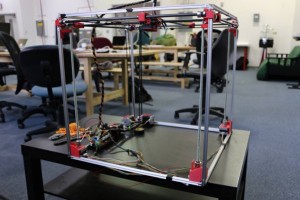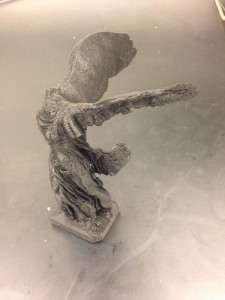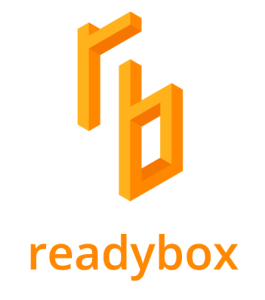 While working as a lab manager for the Rapid Prototyping lab at the University of Maryland, Brett Potter came into contact with dozens of 3D printers from the smallest desktop all the way up to the largest industrial printers. He noticed several problems shared by most of them including regular clogging issues, slow printing speeds, warping and issues with part deformation. After one too many frustrating print jobs, Potter believed that he could build a better 3D printer. At first he started designing his new 3D printer to solve those problems just for himself, but after some impressive early results he decided to take it all the way and try to build a business around it.
While working as a lab manager for the Rapid Prototyping lab at the University of Maryland, Brett Potter came into contact with dozens of 3D printers from the smallest desktop all the way up to the largest industrial printers. He noticed several problems shared by most of them including regular clogging issues, slow printing speeds, warping and issues with part deformation. After one too many frustrating print jobs, Potter believed that he could build a better 3D printer. At first he started designing his new 3D printer to solve those problems just for himself, but after some impressive early results he decided to take it all the way and try to build a business around it.
Potter spent over a year working on the 3D printer that he calls Readybox. Not only did he design and build a brand new extruder for it, but he also used some of the highest-quality 3D printer components that he could get his hands on. Now, calling your machine the fastest consumer 3D printer in the world is a rather bold claim for anyone to make. But it’s even bolder when you’re a 21-year-old engineering student still attending college. And not only is Potter making that claim but, on paper at least, it certainly looks like it may be an accurate one.
With the development process now completed and his Readybox ready to launch, it was at this point that Potter brought on Sam Forline as his new partner and to act as Readybox’s chief marketing officer. Potter’s initial instinct was to offer his new printer for pre-order right away, however at the last minute he changed his mind and decided to launch a crowdfunding campaign instead. It is very likely that it was Forline who was responsible in the shift of strategy, because while a Kickstarter campaign still carries with it some risks, it isn’t as risky as trying to just start selling printers, even if it is a very good printer.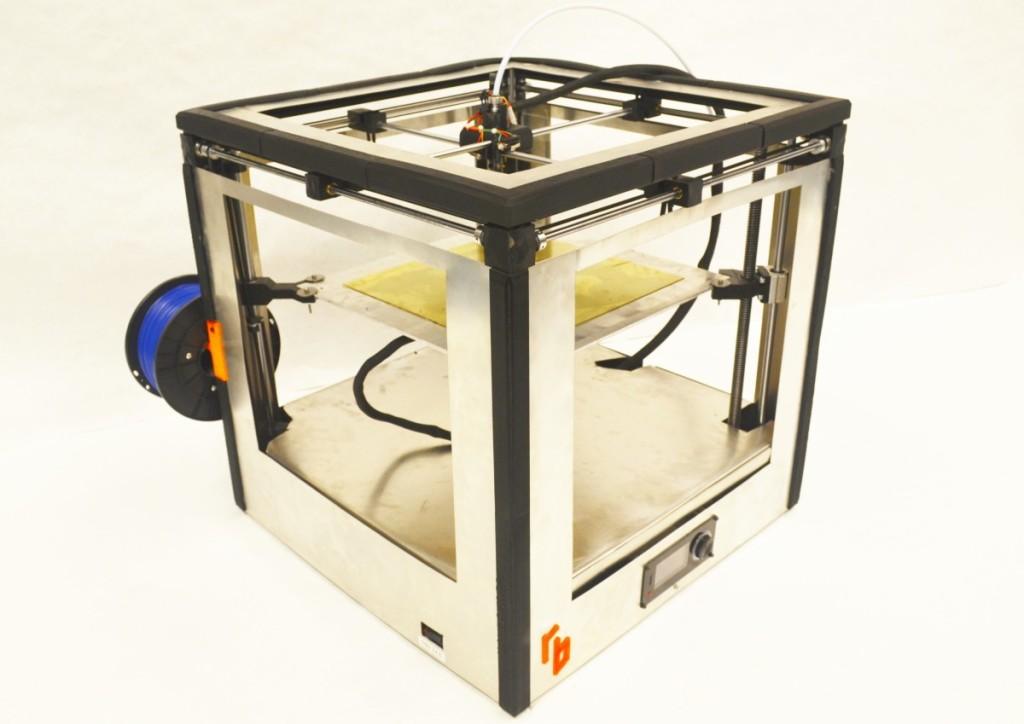
“Brett Potter’s engineering genius is absolutely amazing. My team and I get offers everyday to join startups around the world. Sometimes it’s tough to decide which company to go with, but not with Readybox. This was an easy decision and I couldn’t be more excited to help Brett bring his vision to an international level,” says Forline.
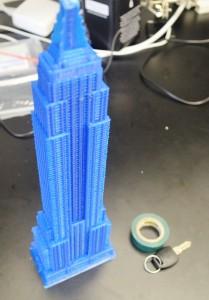 According to the specs that Potter gave me, the Readybox is going to 3D print at some impressively fast speeds, with the maximum printing speed coming in at about 400mm per second with a 0.05mm layer thickness. That is noticeably faster than just about any other desktop or high-end consumer 3D printer on the market. If you compare those speeds to a printer like an Ultimaker 2 with its maximum speed of only about 300mm per second, it is a pretty big jump in speed. But even Ultimaker won’t tell you to 3D print at 300mm per second; they often suggest cutting that speed in half.
According to the specs that Potter gave me, the Readybox is going to 3D print at some impressively fast speeds, with the maximum printing speed coming in at about 400mm per second with a 0.05mm layer thickness. That is noticeably faster than just about any other desktop or high-end consumer 3D printer on the market. If you compare those speeds to a printer like an Ultimaker 2 with its maximum speed of only about 300mm per second, it is a pretty big jump in speed. But even Ultimaker won’t tell you to 3D print at 300mm per second; they often suggest cutting that speed in half.
The differences in printing speeds and what they mean may be a little confusing, and they also may not sound like that much of an improvement. But the base printing speed is really only part of the story, and not the only reason that he says that his printer is so much faster than anyone else’s. Potter also designed a new extruder capable of putting more force on the filament than most printers typically would without risking a jam. Potter’s design allows for higher pressure to be put on the nozzle, which will actually cause the filament to extrude at a much faster rate.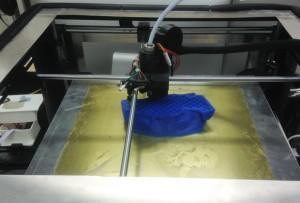
“Most 3D printing hobbyists are concerned only with the linear print speeds- how fast the nozzle can move in a straight line. While Readybox can reach linear speeds higher than most other consumer printers, it also uses a 0.6mm nozzle instead of a standard 0.4mm. This means that even if it printed at 100mm/s next to a MakerBot or Ultimaker at the same speed, it would finish more than twice as fast simply because the volume flow was higher. The larger nozzle will have an impact on the corners of a model, but the change isn’t even noticeable to the naked eye,” Potter explained to me via email.
Not only does the new extruder speed up the printing process, but the higher pressure in the nozzle actually works to eliminate clogging because the heated filament is pushed out faster. That helps prevent most jams and clogs before they happen, and the higher flow rate can even improve the print resolution. Potter says that currently his Readybox is reliably reaching layer heights of 50 microns, and he is in the middle of testing printing settings as low as 25 microns. So far he said that he’s been seeing some promising results.
But it isn’t just the new nozzle and the fast printing speeds that the Readybox has going for it. The generous 13 x 13 x 13 inch (330 x 330 x 330 mm) build volume is in stark contrast to the relatively small size of the printer. At only 21.5 x 21.5 x 22 inches (550 x 550 x 560 mm) the Readybox gives users several inches of extra printing volume without requiring more desk space. The heated Ultem printing bed virtually eliminates the need for adhesives like glue, hairspray or blue painters tape and can be used with both PLA and ABS. The Readybox also has a next generation 32bit ARM based controller board that really helps simplify the printing process.
“I designed [Readybox] to bridge the gap between the half-million dollar industrial machines and the current cheap printers on the market, and it is targeted towards architecture firms, product designers, and schools. It is made for professionals that don’t have the time to be fixing or working on the printer, or to be waiting hours upon hours for simple parts,” Potter explained.
Potter has already done several months of beta testing with several local businesses and 3D printing labs. He received some of his best feedback from an architecture firm in Baltimore that really put the prototype through its paces and his local makerspace also beta tested a Readybox and liked it so much that they have already purchased one. The Readybox Kickstarter campaign is set to be launched on October 10th, and Potter has set a preliminary price of $2999, which will be a significant saving from the final retail price. I’ll certainly be keeping an eye on the Readybox and I’ll make sure to update you when the Kickstarter finally launches.
Let us know your thoughts on this new 3D printer in the Readybox forum thread on 3DPB.com.
Subscribe to Our Email Newsletter
Stay up-to-date on all the latest news from the 3D printing industry and receive information and offers from third party vendors.
Print Services
Upload your 3D Models and get them printed quickly and efficiently.
You May Also Like
3D Printing News Briefs, July 2, 2025: Copper Alloys, Defense Manufacturing, & More
We’re starting off with metals in today’s 3D Printing News Briefs, as Farsoon has unveiled a large-scale AM solution for copper alloys, and Meltio used its wire-laser metal solution to...
3DPOD 260: John Hart on VulcanForms, MIT, Desktop Metal and More
John Hart is a Professor at MIT; he´s also the director of the Laboratory for Manufacturing and Productivity as well as the director of the Center for Advanced Production Technologies....
3D Printing News Briefs, June 28, 2025: Defense Accelerator, Surgical Models, & More
In this weekend’s 3D Printing News Briefs, 3YOURMIND was selected to join an EU Defense Accelerator, and PTC has announced model-based definition (MBD) capabilities within Onshape. Finally, a study out...
EOS in India: AM’s Rising Star
EOS is doubling down on India. With a growing base of aerospace startups, new government policies, and a massive engineering workforce, India is quickly becoming one of the most important...


